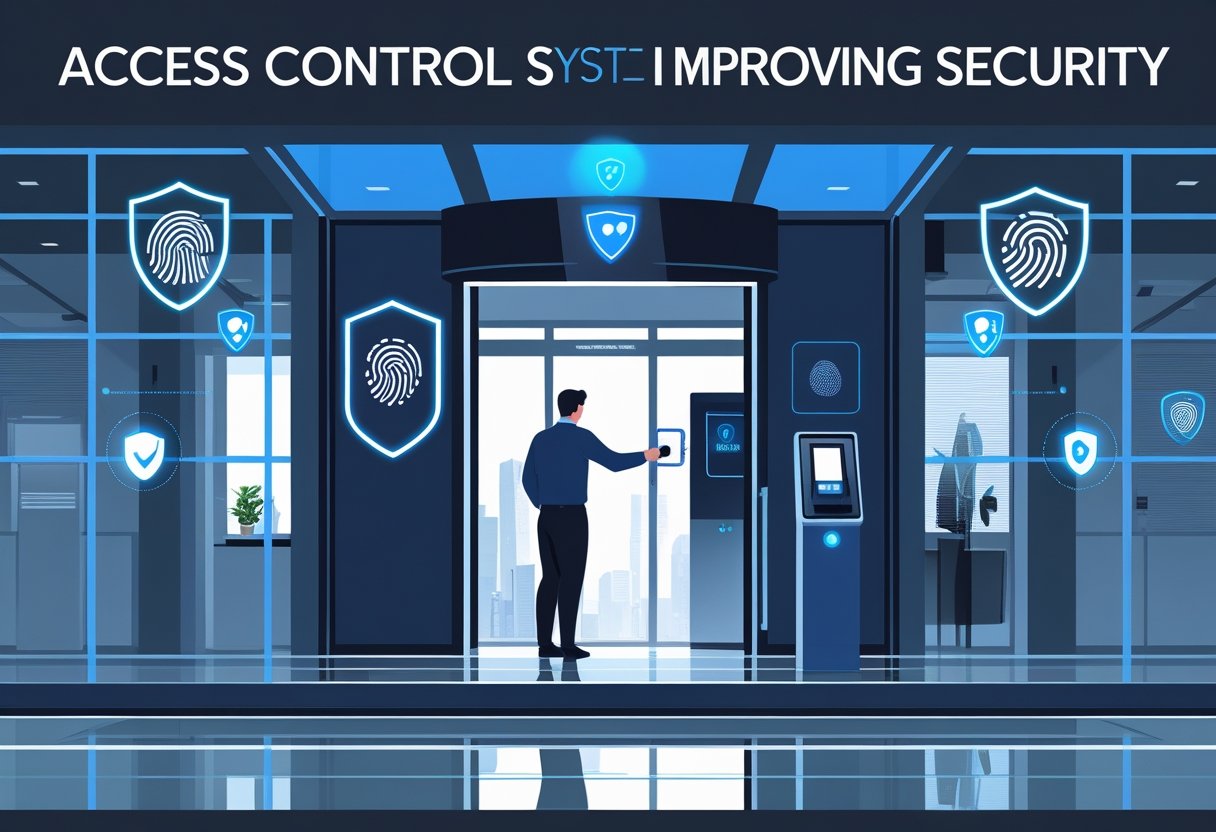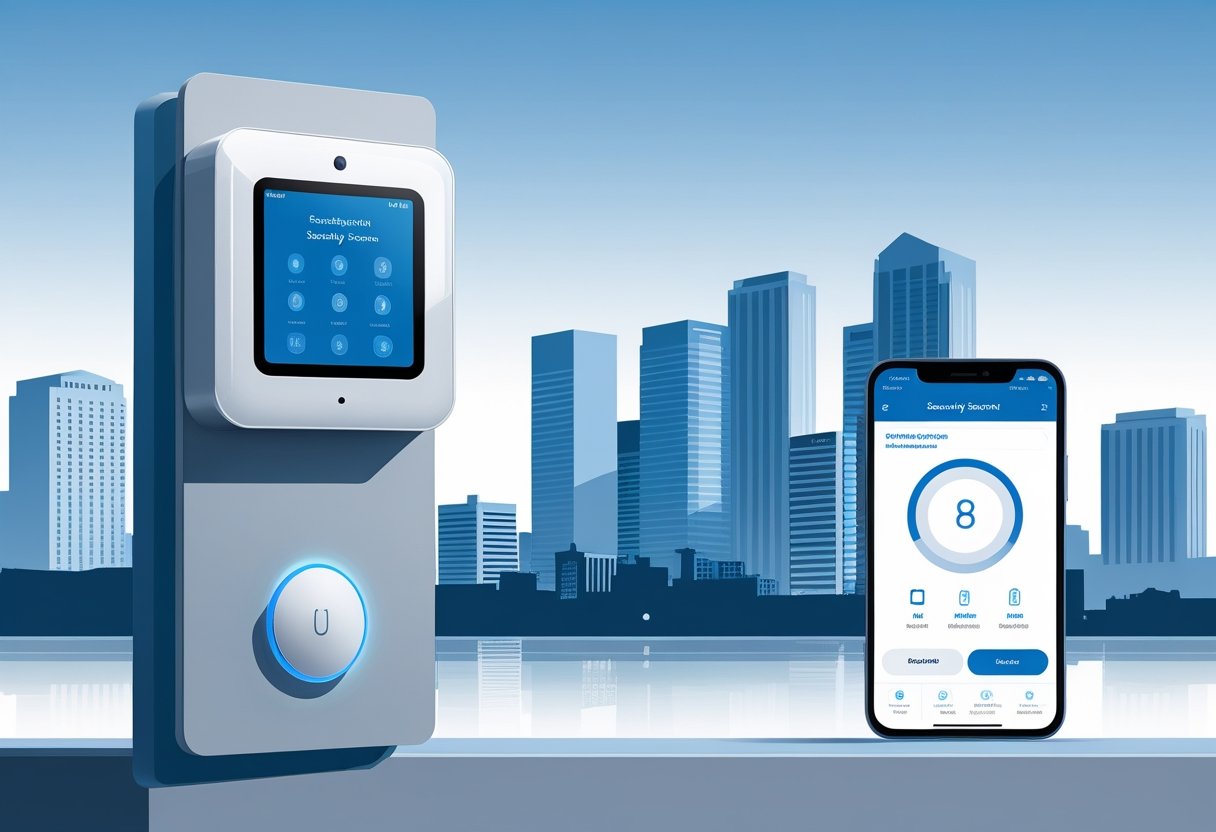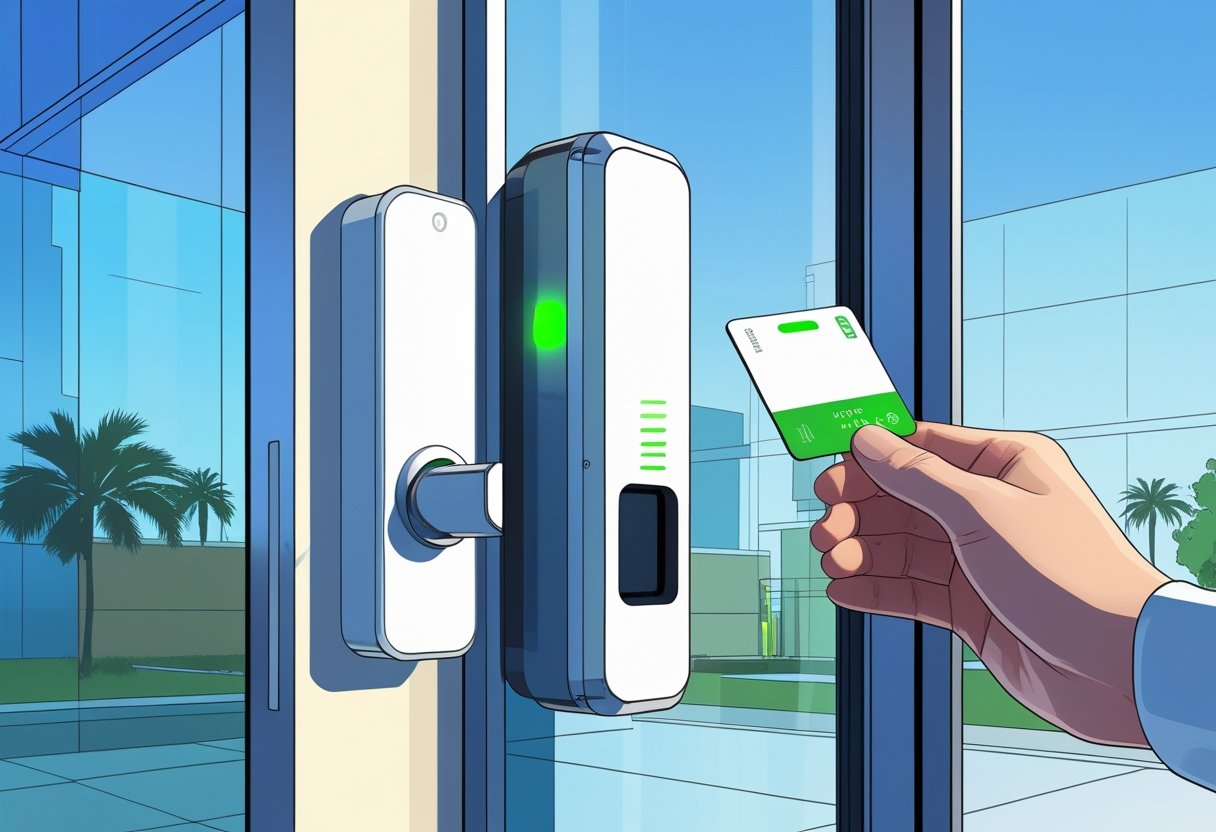Access control systems are essential for enhancing security in today’s rapidly evolving landscape. These systems not only manage entry to physical locations but also protect sensitive digital information. By implementing effective access control measures, you can significantly reduce the risk of unauthorized access and safeguard your valuable assets.
In the Greater Houston area, businesses face unique security challenges that can be effectively addressed through tailored access control solutions. These systems streamline operations by allowing you to manage permissions remotely, providing convenience alongside increased safety. With features like real-time monitoring and integration with other security components, you can maintain a comprehensive view of your facility.
Understanding the benefits of access control systems enables you to make informed decisions about your security strategies. By choosing the right system, you can enhance your organization's safety and efficiency while minimizing risks associated with unauthorized access.
How Access Control Systems Prevent Security Breaches
Access control systems play a crucial role in minimizing risks associated with unauthorized access. By implementing advanced security measures, these systems enhance protection and ensure only authorized personnel can access sensitive areas and information.
Minimizing Unauthorized Access
One of the primary functions of access control systems is to restrict unauthorized access. This is achieved through mechanisms such as keycards, biometric scanners, and password protections.
- Keycards allow personnel to enter only designated areas.
- Biometric scanners utilize fingerprint or facial recognition technology to verify identity.
These systems create an environment where access is meticulously monitored. They not only prevent breaches but also deter potential intruders by establishing clear access protocols.
Proactive Security Measures and Real-Time Alerts
Access control systems incorporate proactive security measures that can detect and respond to incidents in real-time.
When an unauthorized access attempt occurs, these systems can trigger immediate alerts. This can include notifications sent to your security team or alerts for law enforcement.
- Real-time monitoring enables security personnel to respond quickly to threats.
- Audit logs provide a history of access events, essential for identifying patterns and potential vulnerabilities.
Such features enhance situational awareness and allow for swift action, thereby mitigating the risk of further incidents.
Reducing Physical and Data Theft
Implementing access control systems significantly reduces the risk of both physical theft and data breaches.
By limiting access to sensitive areas, these systems protect valuable assets and critical information from theft.
- For instance, areas containing financial data or proprietary information can be secured to prevent unauthorized entry.
- Enhanced security measures also ensure compliance with regulations, further safeguarding your organization against legal repercussions.
Ultimately, effective access control not only protects assets but also fosters a culture of security within your organization.
Key Components of Modern Access Control Systems
Modern access control systems are built on several critical components that enhance security efficiency and effectiveness. Understanding these elements will help you make informed decisions for your security needs.
Authentication Methods
Authentication is the process of verifying the identity of individuals attempting to access resources. Several methods are utilized in modern systems:
- Passwords: The traditional method where users enter a password to gain access.
- Biometrics: This includes fingerprint scanning and facial recognition, providing a unique identification method.
- RFID and NFC: These technologies allow access via ID cards or mobile devices.
- Multi-Factor Authentication (MFA): Combines two or more authentication techniques, such as a password followed by a biometrics check, for added security.
These methods ensure that only authorized personnel can access sensitive areas, significantly minimizing security risks.
Authorization Processes
Once identity is confirmed, the next step is authorization, which determines access levels. Modern systems provide flexible authorization processes:
- Role-Based Access Control (RBAC): Access is granted based on predefined roles within the organization.
- Policy-Based Access Control: This system allows access based on policies that can adapt to various situations or criteria.
- Dual Authentication: Requires two forms of verification, adding an additional layer of security.
These processes ensure individuals only have access to the information and areas necessary for their roles, reinforcing security throughout your operations.
Audit Trails and Monitoring
Implementing audit trails and monitoring capabilities is essential for maintaining security integrity. Effective systems provide:
- Comprehensive Logs: These record all access attempts, successful or not, along with timestamps and user details.
- Real-Time Alerts: Automatic notifications for unauthorized access attempts enable prompt action.
- Reporting Tools: These allow you to analyze access patterns and identify potential security threats.
These features not only enhance accountability but also help you maintain compliance with relevant regulations in the greater Houston area. Monitoring access activity provides insights to improve your security measures continuously.
Types of Access Control Solutions and Their Applications
Access control solutions are essential in protecting sensitive areas and information. They come in various forms, each designed to address specific security needs. You can choose from physical systems, electronic methods, and advanced role-based models, depending on your operational requirements.
Physical Access Control
Physical access control involves using tangible barriers and mechanisms to restrict entry. Common methods include mechanical locks, turnstiles, and security guards. While effective, these solutions may lack the flexibility of modern technology.
In settings like offices or schools, physical controls help manage daily access. For instance, assigning keys to employees allows you to track and limit access to sensitive areas. However, reliance solely on physical methods can lead to vulnerabilities, as keys may be lost or duplicated.
Electronic Access Control
Electronic access control systems enhance security through technology. These systems can include RFID cards, keycards, and biometric recognition. Such solutions provide a more efficient way to manage access than traditional methods.
By implementing electronic locks, you can easily modify access rights. For example, if an employee changes roles, you can quickly update their credentials without rekeying entire locks. This system is ideal for businesses needing to secure data centers or sensitive infrastructure.
Role-Based and Attribute-Based Models
Role-based access control (RBAC) and attribute-based access control (ABAC) are modern approaches that enhance security by allowing you to set permissions based on user roles or attributes.
In RBAC, users are assigned roles that define their access levels. This simplifies management, as permissions are adjusted based on job functions. For example, an administrator may have higher access compared to a regular employee.
ABAC goes further by considering user attributes, such as department or location. This allows for more granular access management. You can grant access based on specific conditions, enhancing security across various applications, especially for organizations with dynamic security needs.
Advanced Features Enhancing Security and Convenience
Advanced access control systems offer features that not only bolster security but also provide convenience for users. These enhancements allow you to monitor access in real-time and integrate seamlessly with other security technologies.
Remote Monitoring and Mobile Compatibility
Remote monitoring capabilities enable you to oversee your property from anywhere. Using a smartphone app, you can receive notifications about activity in real-time, ensuring that you’re always connected.
With mobile compatibility, you can manage access permissions for different individuals. You can grant or revoke access remotely, which is useful for temporary visitors or service providers. This flexibility allows for a tailored approach to security, maintaining safety without compromising convenience.
Smart locks further enhance this feature by allowing keyless entry. You can unlock your doors with your smartphone, eliminating the need for physical keys. This not only simplifies access but also provides you with detailed logs of who entered and exited your premises.
Integration with Alarm Systems and Smart Home Technology
Integrating access control with alarm systems and smart home technology creates a comprehensive security solution. When these systems work together, they offer enhanced protection and responsiveness.
For instance, if your alarm system detects a breach, it can automatically lock all doors and send alerts to your smartphone. This immediate response helps prevent unauthorized access effectively.
Furthermore, linking your access control to smart home systems allows you to automate security. You can set routines where doors lock at a certain time or when you leave the premises. This flexibility not only increases security but also provides you peace of mind, knowing everything is secured with minimal effort.
Addressing Security Vulnerabilities and Compliance
In enhancing security, identifying and mitigating vulnerabilities is critical. You must also ensure compliance with regulations, such as GDPR, to protect sensitive data. This section discusses common vulnerabilities, the importance of multi-factor authentication, and compliance measures to safeguard your systems.
Common Security Vulnerabilities
Access control systems can be susceptible to various security weaknesses. Common vulnerabilities include:
- Weak Password Policies: Ineffective password requirements can lead to unauthorized access.
- Outdated Software: Failing to update software can expose known flaws to attackers.
- Insufficient User Training: Employees unaware of security best practices can inadvertently compromise the system.
By recognizing these vulnerabilities, you can implement targeted strategies to reduce risks within your organization. Regular audits and updates should be part of your routine to maintain system integrity.
Mitigating Risks with Multi-Factor Authentication
Implementing multi-factor authentication (MFA) significantly enhances your security posture. MFA requires users to provide two or more verification factors to gain access, adding layers of protection.
Consider these methods:
- SMS or Email Codes: Sending temporary codes that users must input.
- Authentication Apps: Using applications that generate time-sensitive codes.
- Biometric Verification: Implementing fingerprint or facial recognition technology.
By integrating MFA, you can effectively reduce the likelihood of unauthorized access, making it more difficult for potential intruders to breach your system.
Ensuring GDPR and Data Privacy Compliance
Compliance with GDPR is essential for organizations handling personal data within the Houston area. Non-compliance can result in significant fines and damage to your reputation.
Key steps for ensuring compliance include:
- Data Encryption: Encrypt sensitive information to protect it from unauthorized access.
- Access Controls: Implement role-based access controls to minimize data exposure.
- Regular Training: Educate employees about data privacy regulations and your organization's policies.
Adhering to these practices not only safeguards your data but also builds trust with your stakeholders. By prioritizing compliance, you reinforce your commitment to protecting personal information.
Best Practices for Access Control System Implementation
Implementing an effective access control system is essential for enhancing security within your organization. Focus on the right authentication technologies, managing access rights, and maintaining regular reviews to ensure the system's effectiveness.
Selecting Appropriate Authentication Technologies
Choosing the right authentication methods is crucial. Consider implementing multi-factor authentication (MFA) to enhance security. MFA adds layers of protection beyond passwords, significantly reducing the risk of unauthorized access.
You should also evaluate biometric options, like fingerprint or facial recognition. These methods offer unique identification but vary in implementation costs and user experience.
When selecting technologies, ensure they integrate smoothly with your existing systems. The goal is to create a seamless experience for legitimate users while maintaining high security. Various solutions cater to different security needs and budgets, so perform due diligence when making your choice.
Managing Access Rights and Audit Logs
Properly managing access rights minimizes the risk of data breaches. Begin by defining clear roles and responsibilities for users. This can involve creating roles with specific permissions, ensuring users only access information necessary for their jobs.
Moreover, maintain detailed audit trails that log user access and modifications. These logs are vital for compliance and provide insights into potential security breaches. Regularly review these logs to identify any unusual activity, which could indicate unauthorized access attempts.
Establish protocols for granting and revoking access as employees join or leave the organization. This ensures that only current personnel have access to sensitive information, further enhancing your security measure.
Periodic Review and System Updates
Regular reviews of your access control system are vital for maintaining security. Conduct audits to assess whether current access rights are still appropriate. This helps identify and correct any discrepancies promptly.
Additionally, stay updated with the latest advancements in access control technology. Implementing software updates and patches is essential to address vulnerabilities. Outdated systems can be easily compromised, putting your organization at risk.
Develop a schedule for periodic system assessments, incorporating insights from logged activities. This proactive approach will help you adjust security measures as needed, ensuring continued protection for your sensitive data.
Frequently Asked Questions
Access control systems provide essential tools for enhancing security across various environments. From preventing unauthorized access to ensuring compliance with regulations, these systems deliver numerous benefits. Here are some specific questions and answers that delve into how these systems function in security management.
What are the main benefits of using access control systems in security management?
Access control systems improve security by managing access to physical and digital assets. They restrict unauthorized entry, providing a clear audit trail for monitoring activities. Enhanced security measures help protect sensitive resources, which minimizes the risk of theft and vandalism.
How do biometric access control systems enhance facility security?
Biometric access control systems use unique physical characteristics—like fingerprints or facial recognition—to verify identity. This technology offers a higher level of security than traditional keycards or codes, as biometrics are difficult to replicate. By ensuring that only authorized individuals can enter, these systems significantly reduce the chance of unauthorized access.
What role does access control play in compliance with security regulations and standards?
Access control systems assist in meeting various security regulations by providing detailed logs of user access. This is crucial for compliance with standards such as HIPAA or PCI-DSS, which require strict control over sensitive information. By maintaining accurate records, you can demonstrate compliance during audits and investigations.
Can access control systems be integrated with other security systems, and if so, how?
Yes, access control systems can often integrate with surveillance cameras, fire alarms, and alarm systems. This integration creates a unified security infrastructure that allows for better monitoring and responses to incidents. Combined systems enhance overall safety by facilitating coordinated responses to breaches or emergencies.
How does access control contribute to the prevention of unauthorized entry and data breaches?
Access control systems establish defined entry points and require user authentication, significantly reducing unauthorized access risks. By limiting access to sensitive areas based on roles, you can better protect digital and physical data. This structured approach minimizes the potential for data breaches and enhances overall security.
In what ways do modern access control systems address tailgating and piggybacking security concerns?
Modern access control systems incorporate features like anti-tailgating technology, which prevents unauthorized individuals from following authorized users into secure areas. Solutions such as turnstiles or revolving doors further restrict access, ensuring only one person is allowed entry at a time. These measures effectively address common security vulnerabilities associated with tailgating and piggybacking.
.svg)



.svg)


.svg)



